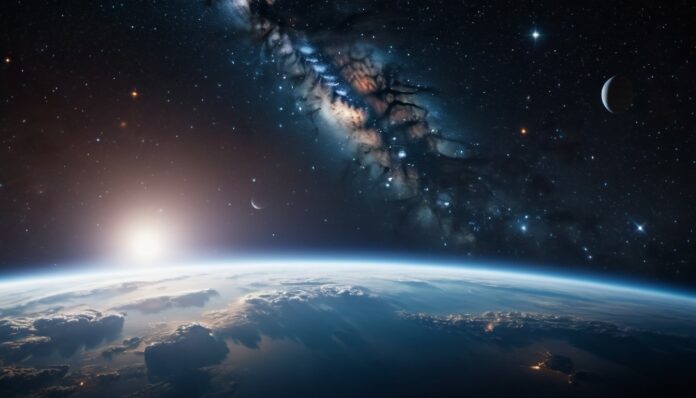The universe is astonishing and infinite. As you might have guessed, today we have some interesting facts about the universe. Let’s put it this way: all its ordinary matter, all the particles that make up us and everything we can see, constitute only 4% of its matter.
Active galaxies often emit 100 times more light than normal galaxies. With the discovery of quasars in 1963, it became clear that the light comes not from stars, but from a central region smaller than our solar system.
- Almost every galaxy, including our Milky Way, has at least one black hole.
- Forty-seven years ago, humanity took its first steps on the Moon – and the footprints will likely remain there for another million years because the Moon has no atmosphere.
- The light from some stars takes so long to reach our eyes that when we look at the night sky, we are actually looking into the past. By this same logic, NASA’s Hubble Telescope can look back in time by up to 13 billion years.
- The Moon is moving away from Earth slightly each year, specifically by 3.8 cm. This is a confirmed fact: the Moon is indeed slowly drifting away from us, and the consequence could be that Earth becomes unstable, leading to potential catastrophes. However, this might happen only in several billion years.
- About 275 million new stars are born every day. This adds up to around 100 billion stars each year.
- It takes a photon approximately 170,000 years to travel from the Sun’s core to its surface. This occurs as energy slowly radiates outward through the Sun’s radiation zone.
- The farthest artificial object from Earth is the Voyager-1 spacecraft. It has been traveling since 1977 and is still collecting data. It is the first human-made object to undertake interstellar travel, and this is a fact.
- Another interesting fact is that the center of our galaxy tastes like raspberries and smells like rum. Based on studies of dust in the center of our galaxy, the present amino acids suggest that this could be the case.
- Earth’s rotation is slowing down, and this is a proven fact. The rotation slows by about 17 milliseconds per century. This means our days are getting longer by about 2 milliseconds every ten years.
- Scientists have identified which planet in our solar system has the tallest mountain – it’s on Mars. Olympus Mons on Mars is 24 kilometers high.
- Earth is approximately 150 million kilometers from the Sun. Traveling non-stop at 96 km per hour, we would reach the Sun in 177 years – quite a trip.
- The only possible energy source is matter heated to incandescence as it spirals into a giant black hole, with a mass 50 billion times that of the Sun.
- In the 1990s, NASA’s Hubble Space Telescope discovered that although active galaxies make up only about 1% of galaxies, supermassive black holes are not anomalies.
- There are mirrors on the Moon that allow us to calculate the exact distance to Earth. They were placed there during the Apollo missions. We still shine lasers on them today to measure the distance to the Moon, considering we know the speed of light.
- Another interesting fact is that the Milky Way rotates at a tremendous speed, specifically at 250 kilometers per second, and completes a rotation every 200 million years.
- In the constellation Aquila, there is a gas cloud containing enough alcohol to make 227 trillion liters of beer. This was discovered in 1995.
- If the stars in galaxies were reduced to the size of a tennis ball, they would be approximately 4,800 km apart. This means that much of the galaxy is actually empty space.
- Astronomers estimate there are 2 trillion galaxies in the universe. This new figure was obtained in 2016.
